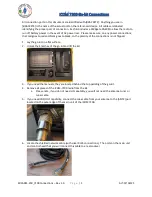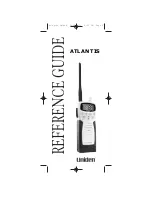
3
Manual Supplement
00809-0200-4108, Rev AB
Rosemount 2090 Pressure Transmitter
December 2018
Rosemount 2090 Pressure Transmitter
2.0
SIS operation and maintenance
2.1
Proof test
The following proof tests are recommended. In the event that an error is found in the safety and
functionality, proof test results and corrective actions taken can be documented at
mount/SafetyWeb-Apps/Report-A-Failure
All proof test procedures must be carried out by qualified personnel.
Use Field Communicator Menu Trees and Fast Keys to perform a Loop Test, Analog Output Trim, or
Sensor Trim. Security switch should be in the (
) position during proof test execution and repositioned
in the (
) position after execution. See Appendix D of the
2.2
Partial proof test
The simple suggested proof test consists of a power cycle plus reasonability checks of the transmitter
output. Reference the FMEDA Report for percent of possible DU failures in the device.
FMEDA report can be found at:
Emerson.com/Rosemount/Safety-Products.
Required tools: Field Communicator and mA meter.
1.
Bypass the safety function and take appropriate action to avoid a false trip.
2.
Use HART
®
Communications to retrieve any diagnostics and take appropriate action.
3.
Send a HART command to the transmitter to go to the high alarm current output and verify that the
analog current reaches that value
(1)
. See Verifying alarm level in the
4.
Send a HART command to the transmitter to go to the low alarm current output and verify that the
analog current reaches that value
(1)
.
5.
Remove the bypass and otherwise restore the normal operation.
6.
Place the Security switch in the (
) position.
2.3
Comprehensive proof test
The comprehensive proof test consists of performing the same steps as the simple suggested proof test
but with a two point calibration of the pressure sensor in place of the reasonability check. Reference the
FMEDA Report for percent of possible DU failures in the device.
Required tools: Field Communicator and pressure calibration equipment.
























